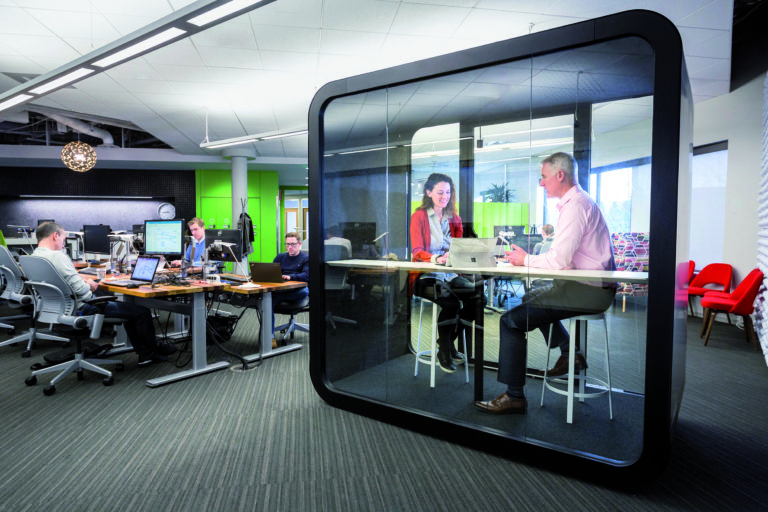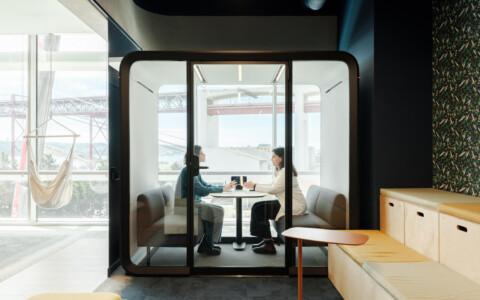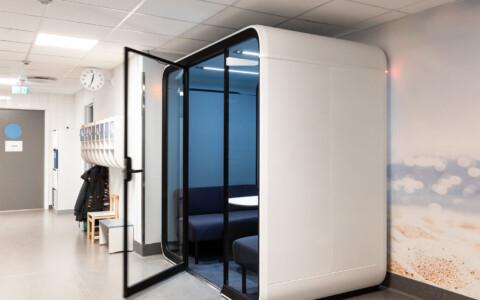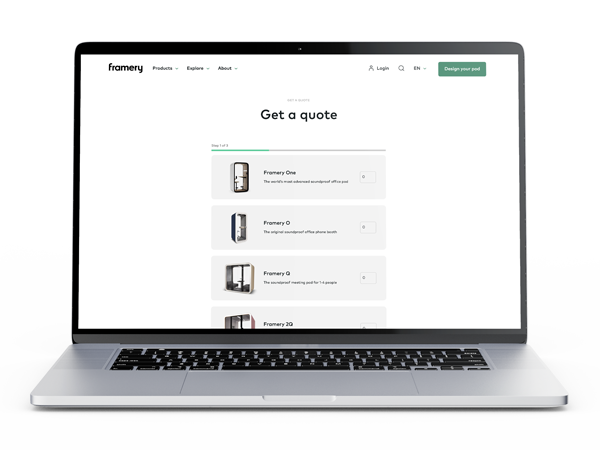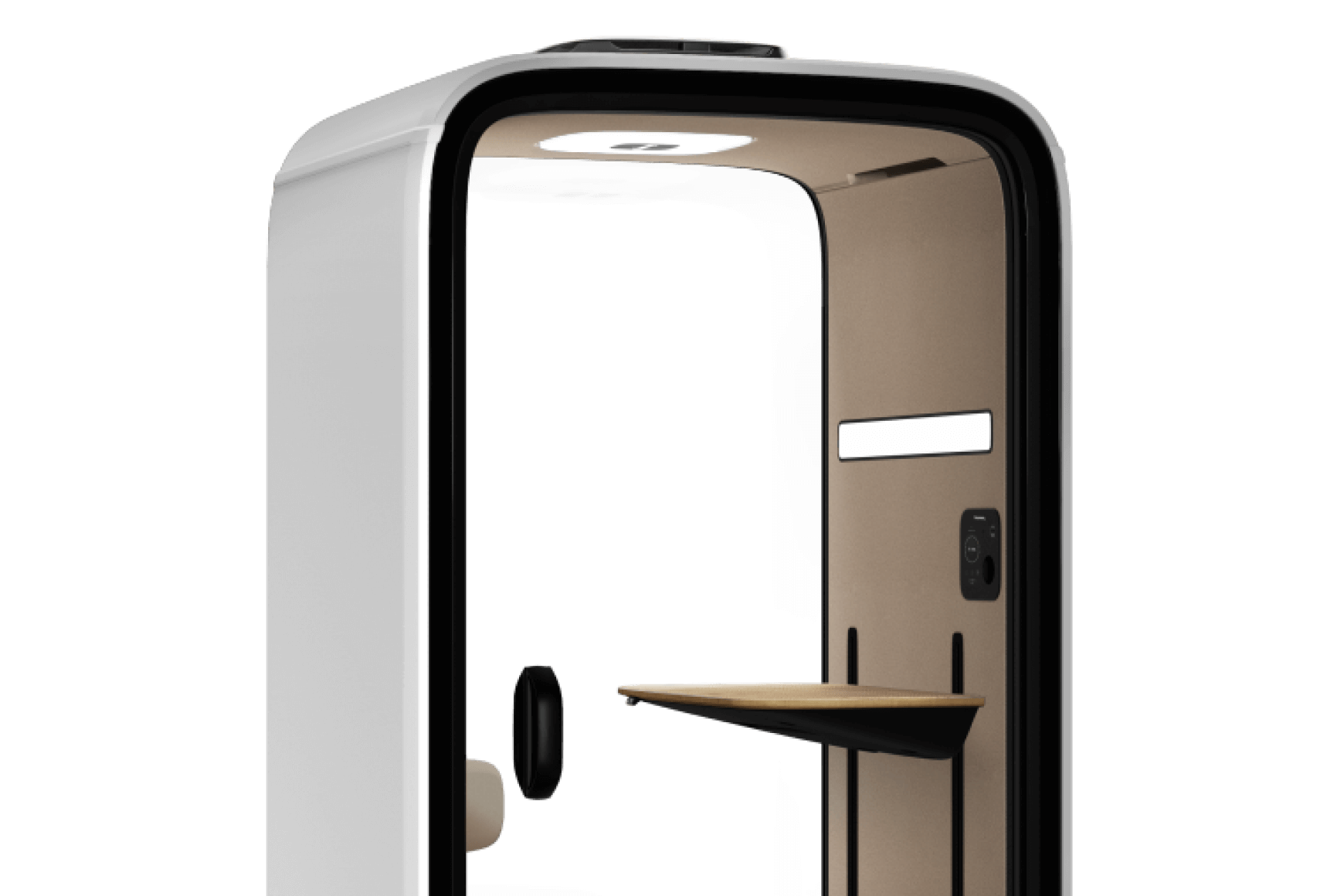At Framery, we’re passionate about happiness and we continuously strive to offer the best solutions to increase happiness in the workplace. This is why we always seek the answers to two questions:
- How can Framery improve daily work life?
- What needs to change in offices to increase work day satisfaction?
The reality is that work spaces in all corners of the world are failing to fulfill employees’ needs. Research shows that we as humans require a variety of work spaces. One recent study on work productivity found that knowledge workers need work spaces that stimulate openness, creativity and collaboration, in addition to enclosed settings to focus on tasks.
In other words, workers need places for collaboration and concentration. Just take a look at your calendar. For many of us, our day consists of blocks of meetings and individual work tasks.
Studies have shown that there are indeed two psychological needs that explain satisfaction within most offices – a need for interacting with others and a need for privacy. A well-functioning office will have a steady balance of concentration spaces and collaboration spaces.
Few people are able to collaborate eight hours a day. Uninterrupted time is also required in order to get things done and recover from the socializing and noise around them at the office. When it comes to work stress and productivity, quiet work spaces are vital.
Research confirms that personal productivity drops when there are distractions at the office. It’s been recommended that open plan offices should be complemented with many, easily accessible quiet workspaces. This is about answering the needs for privacy and concentration.
A study focusing on high and low satisfaction rates in activity-based offices found that offering enclosed spaces for focused work proved helpful.
This finding was even validated by another research group, which found that the need for privacy strongly predicts the level of satisfaction among the workforce in activity-based offices, stating the following:
“To enhance satisfaction with Activity-based working environments in practice, it seems of utmost importance to increase experienced levels of privacy, especially for workers high in need for privacy and for older workers. Activity settings that are intended to be used for concentration work deserve special attention, as these should be sufficiently available and tailored to specific person-related and job-related needs.”
Making room for creativity in the workplace
In addition to concentration spaces, there is also a clear need for collaboration spaces. These are spaces like informal areas, functional meeting rooms and inspiring open work areas, all of which answer our human need of belonging.
How workers collaborate has evolved quite significantly over the years. While email, video calling and other forms of digital communication have been around for quite a while, how we collaborate face-to-face at the office has changed as well, and continues to change. As more and more work spaces have become increasingly open and transparent, spontaneous interactions at the office have also increased.
So, what has that meant for face-to-face meetings at the office? The number of people attending these face-to-face meetings is decreasing and according to a Finland-based study, 78% of meetings today are between four people or less. The same study also shows interesting insights about space usage and found that large meeting rooms with a capacity of 9-15 and more are used by just one person 21% of the time. They summarize their findings:
“There is a mismatch between the sizes of meeting spaces, and the sizes of groups that use them.”
“Video conferencing, online and phone meetings may be one explanation for why there are so many “1-person meetings”. It may also be hard to book rooms in advance and correctly predict the right number of attendees.”
In addition to this clear mismatch, there are some common problems with the flowing use of existing work spaces as there are typically too few spaces, which causes complications. It’s not uncommon for meeting rooms to be full when there’s a sudden need and finding a suitable place can be challenging.
For example, someone could need a meeting room for 10 people, but the only bigger meeting room of the office is occupied by one person having a conference call. Making the information on the availability and status of the meeting room has also been known to prove challenging in these cases.
These are just some of the daily obstacles around meeting spaces that take place in offices all over the world, every day.
According to some estimates, typical workers can spend two years of their lives in meetings, so it’s clear that it’s worth confronting the meeting space plight.
As Framery is going all-out to make work lives better and happier, we recommend two tips to tackle these meeting space struggles.
1. Provide two kinds of meeting rooms
Every office should have work spaces that must be reserved in advance. When a worker needs a meeting room or another space – like a Framery pod – he or she books a session for it.
In addition, work spaces that cannot be reserved in advance should also be made available to the workforce. Their purpose is to provide spaces that you can use at a moment’s notice, when the need arises. In these cases, it shouldn’t take more than a few seconds to think about where you can go to have your phone call, one-on-one discussion or focused work session.
Here at our own Framery head office, we have these two types of meeting rooms, combined with a simple system that’s proven to work for us. Most of our meeting rooms must be reserved in advance, which is convenient for recurring team meetings. In one area of our office we have several Framery pods, each of which can be used whenever needed, without reservations. We find this very flexible, when you know that there are always available spaces where you can have your meeting.
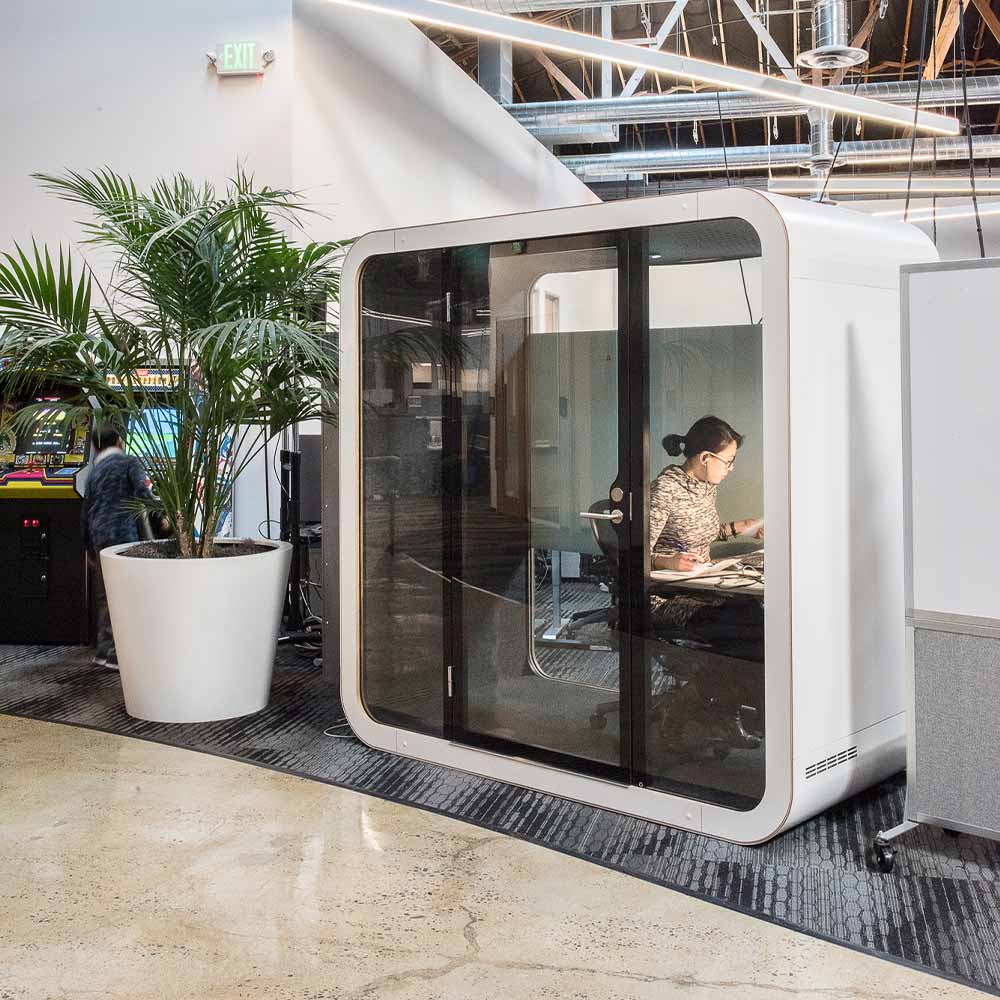
2. Provide a system to manage and reserve work spaces
We believe that quality work spaces and supporting technology truly make an impact on the happiness and fluency of our work life. Our pods and other meeting spaces at the office can even be supplemented with a reservation system, which makes their use more manageable.
We’ve been looking for a nice and easy way to reserve our pods at the office. This is when we collaborated with Joan – the digital display and management booking system set to revolutionize the workplace. The experience together between Framery and Joan was nothing but positive, as we have many things in common.
At Framery we’re passionate about solving noise and privacy challenges in offices, while our friends at Joan are world-class in providing a more streamlined way of using these private spaces. We also share similar values since the two brands put a premium offering into our design, product innovation, and ease of usage. Add the concept of no wires, no hassles, no fuss digital signage and you have a perfect fit.
Joan is all about working better, smarter and more efficiently. Framery is all about efficiency, zero disturbances and happiness in the office. Combine the two and you’re well on your way to a happy workplace.
Sources:
Chadburn, A., Smith, J., & Milan, J. (2017). Productivity drivers of knowledge workers in the central London office environment. Journal of Corporate Real Estate, 19(2), 66-79.
Hoendervanger JG, Ernst AF, Albers CJ, Mobach MP, Van Yperen NW (2018) Individual differences in satisfaction with activity-based work environments. PLoS ONE 13(3): e0193878.
Haapakangas, A., Hongisto, V., Varjo, J., & Lahtinen, M. (2018). Benefits of quiet workspaces in open-plan offices–Evidence from two office relocations. Journal of Environmental Psychology, 56, 63-75.
Brunia, S., De Been, I., & van der Voordt, T. J. (2016). Accommodating new ways of working: lessons from best practices and worst cases. Journal of corporate real estate, 18(1), 30-47.
Rapal (2018). Workplace Review. Global Workplace Insights 2018. Available: https://www.rapal.com/optimaze-workplace-review

